Ground covers are the base layer of any good garden design, and one of my favorites for low maintenance and year-round good looks is creeping juniper, a low-growing shrub that’s native to the U.S. and grows in a wide variety of conditions. In the wild it grows on rocky outcroppings in places like the Maine coast and British Columbia, so it’s adaptable to salt sprays, poor soils, dry heat, periods of drought and neglect.
And for gardeners in cold climates, creeping juniper offers visual interest and lends structure to a winter garden that contains other evergreens of various sizes, like boxwood, false cypress, dwarf pine and inkberry holly.
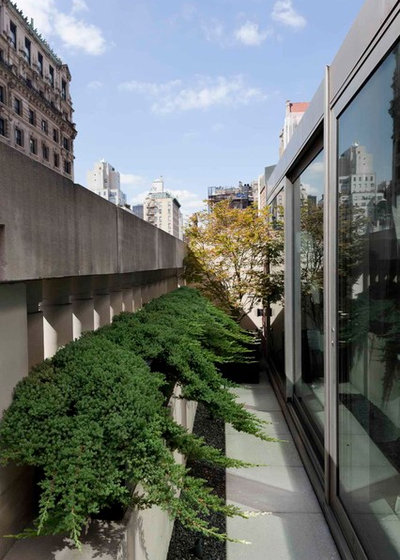
Sozo Landscape Design
Botanical name: Juniperus horizontalisCommon name: Creeping juniper
Origin: Native to the northern U.S.
Where it will grow: Hardy to -30 degrees Fahrenheit (USDA zone 4; find your zone)
Water requirement: Medium to dry soil
Light requirement: Full sun
Mature size: 12 to 20 inches tall with a spread of 4 to 8 feet
Benefits and tolerances: Tolerates drought, rocky soil and air pollution; good for erosion control
Seasonal interest: Year-round
When to plant: Spring to fall
Distinguishing traits. Creeping juniper does just as its name implies, spreading at a medium growth rate to form low mounds that cover the ground or cascade over the edges of containers.
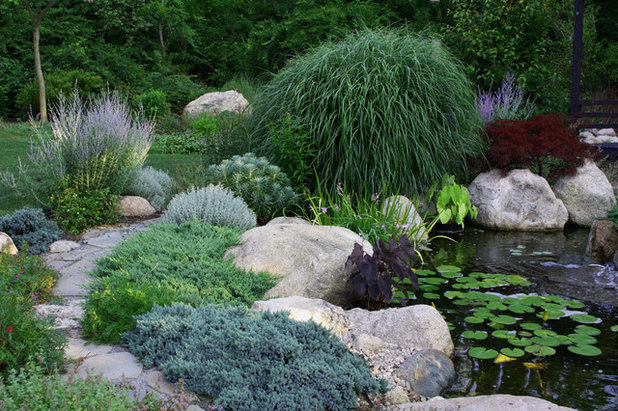
Amy Martin Landscape Design
How to use it. This shrub is particularly effective in the winter garden; combine it with boulders in naturalistic open areas or use it to stabilize slopes.
It also makes a good addition to small ponds or water features and combines well with other low junipers, such as dwarf Japanese garden juniper (
Juniperus procumbens ‘Nana’), and perennials with contrasting forms, like iris or hosta.
Perhaps the most popular cultivar is ‘Wiltonii’ (also called ‘Blue Rug’), which grows only 4 to 6 inches tall. Found on Vinalhaven island in Maine and introduced by South Wilton Nurseries in Connecticut, this form is salt and wind tolerant and has blue needles that turn purple in winter.
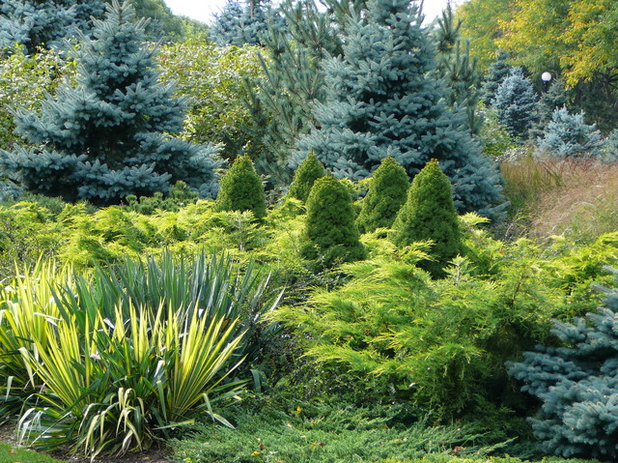
Koreman Landscape Company
Mixed with other woody plants, creeping juniper adds texture and contrast, especially when used with false cypress (
Chamaecyparis spp) or blue spruce.
In naturalistic settings pair low junipers with wildflowers such as false sunflower (
Heliopsis helianthoides) and helenium, or plant clumps of airy panic grass (
Panicum virgatum) or fountain grass amid the junipers.
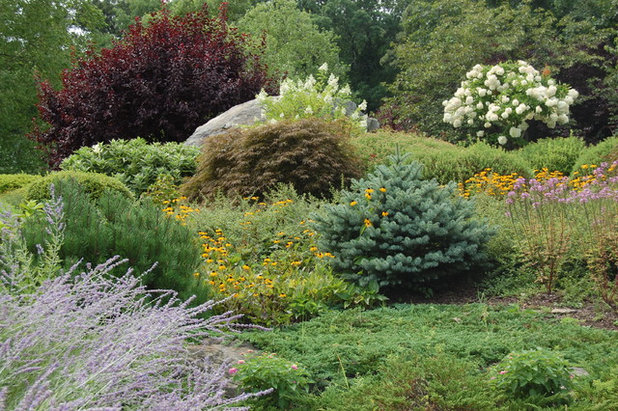
Mary-Liz Campbell Landscape Design
With large and small gardens, weed control is an issue, particularly in sunny areas. Though slow growing, creeping juniper will eventually cover a large area, depending on the cultivar you choose.
Juniperus squamata ‘Blue Star’ will spread to 4 feet with maturity in full sun; the plants have silver-blue needles, which provide good visual contrast.
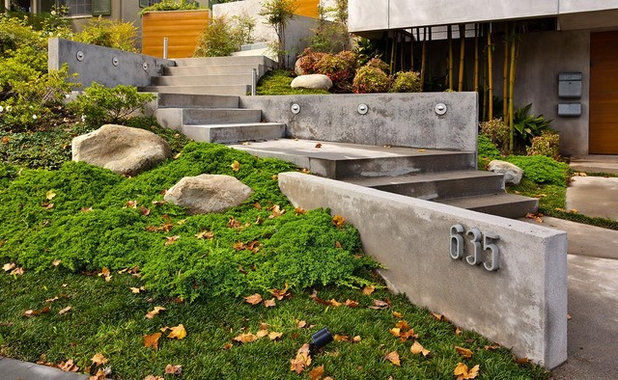
MGS Architecture
Planting notes. Low junipers make an outstanding choice for entry areas, as they look good throughout the seasons and provide contrast to hardscape features like stairs, pathways and boulders.
Create planting pockets around established plants and intersperse interesting perennials, ornamental grasses or even ephemeral bulbs like allium or camas lily for contrast. The loose branches are easily trimmed or cut back, so you can continue to make room for other things.
Junipers grow best in full sun and prefer dry conditions; humidity and excessive moisture can lead to blight. If this happens, prune out the affected areas.





